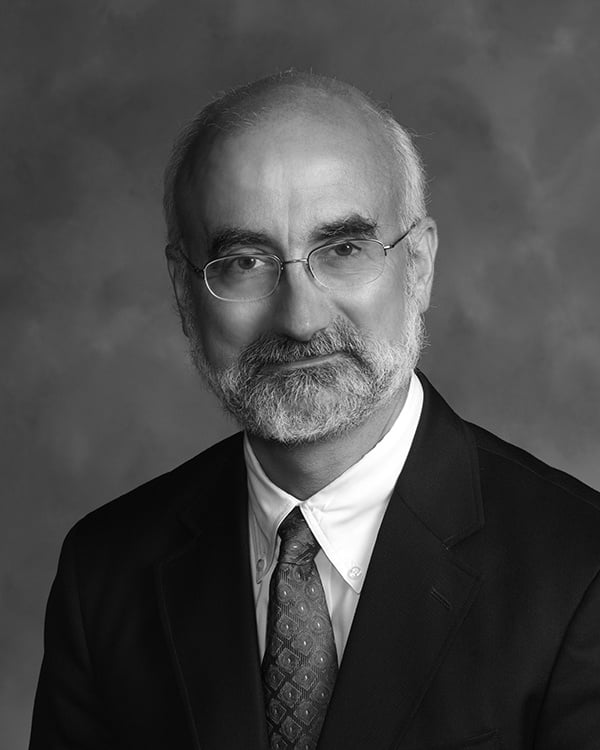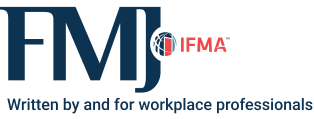On Standards
International Standards: Developments for FM
Representatives of IFMA and other organizations have been working through the American National Standards Institute (ANSI) representing the United States and meeting with representatives from more than 25 other countries, developing a set of international standards for facility management. These standards are being developed under the International Organization for Standardization (ISO) technical committee, known as ISO/TC 267 – Facility Management. ISO/TC 267’s standardization work began more than four years ago, and the committee has met several times each year, sometimes in-person and often virtually. While progress is sometimes slow, the standards are taking shape and may begin to affect facility leaders worldwide in the coming years.
Although several European and Asian nations have FM standards affecting owners and organizations within their national boundaries, there are no international standards and no national standard for FM in the United States. The U.S. is catching up now. A recent draft to the U.S. Department of Labor Standard Occupational Classifications (SOC), proposed for 2018, recognizes facility managers as a separate and distinct classification. The new FM SOC code 1-3013 defines facility managers as those who:
Plan, direct or coordinate operations and functionalities of facilities and buildings. May include surrounding grounds or multiple facilities of an organization’s campus.
So as those performing the service are being recognized in the United States, so will the industry itself through the work of ANSI representatives to the ISO technical committee.
Impact of standards
Why are FM standards important and why should IFMA be involved? The built environment plays a significant role in the world. Consider the United States. While construction represents less than 10 percent of the U.S. annual gross domestic product, it is one of the most long-lived inputs to the economy and an asset that must be preserved, operated and maintained. There are facilities, both vertical (buildings) and horizontal (roads, bridges, utilities, levees, etc.).
Depending on the industry, individual IFMA members have a significant influence on the strength and value of the U.S. gross domestic production by providing and maintaining the facilities in which most other production occurs. Now consider this same example across a global landscape. Development of standards provides a needed measurement tool to demonstrate the effectiveness of the support provided and to help the industry improve.
In the 2016 September/October FMJ “On Standards” article, Jim Whittaker wrote:
[ISO standards are] strategic tools that reduce costs by minimizing waste and errors and increasing productivity. They help companies to access new markets, level the playing field for developing countries and facilitate free and fair global trade.
He also discussed ISO 41001, a facility management system standard (MSS) in development by ISO/TC 267 with the ultimate goal of enabling …an organization to be able to demonstrate that it has a robust process through which to design, manage and improve its integrated facility management system… to improve performance.
Current work toward standardization
In summary, the FM standards work within ISO has focused on three areas to date. The first is clarifying what is meant by “facility management” and defining several terms that describe what the profession does. The definitions are high level and focus on the profession overall rather than on specific definitions about what is in a facility or defining the services performed by a facility organization.
The “Facility Management – Vocabulary” document, ISO 41011, provides standard nomenclature used in FM and will be used in subsequent standards (described below). These definitions concern eight areas: FM, assets, people, sourcing, process, finance, general business and measurement. Without going into the details of each area or the definitions provided, the vocabulary standard identifies that FM is a complex field incorporating a wide range of knowledge and expertise.
Beyond the complexity and scope of FM, there are also a number of ways of delivering or receiving FM services. Facility operators can view this in the form of a matrix: From an ownership perspective, FM services may be self-operating or outsourced; while from an FM perspective, the services may come from an internal service provider or from an outside organization (contractor). All four perspectives and both sides of the issue must be covered via these two approaches. It is no wonder that it took more than three years to reach agreement on the vocabulary document.
There are many terms in ISO 41011 whose definitions may be familiar to IFMA members: terms such as “contracting,” “support service,” “end-user” and “benchmarking” to name a few. However, while the industry may be comfortable with the general use definition, there may be subtle but important differences between what is presumed to be a common term and how it is defined by ISO. IFMA members will be generally comfortable with the definitions because they are consistent with those found in resources within the online Knowledge Library and other IFMA publications.
The next standard is ISO 41012, “Facility management – Guidance on strategic sourcing and the development of agreements,” developed concurrently with the vocabulary document. This standard provides a management model for owners of facilities and their FM organizations to assess and determine if certain FM services should be retained or replaced.
This is becoming — and will continue to be — an increasingly important issue. Consider, for example, the rapid changes occurring in facilities technology and the rise of data-driven management practices, leading to more complex and specialized FM requirements that may require external support. Alternatively, an organization may decide to focus on its core mission and obtain production and operation facilities from an outside provider. From the perspective of users, the standard supports the FM organization/owner in establishing expectations, defining what services will be delivered, overseeing the management of services and measuring performance.
As the above standards near publication and use after four years of development, review and approval, it is necessary to start tying things together at a higher level. The next significant standard, ISO 41001, “Facility management – Management systems – Requirements with guidance for use” is in development now. It looks at an organization’s structure and shows how it can focus on continuous improvement via a Plan-Do-Check-Act cycle. This is a well-known management approach like ISO 9001 but, in the opinion of the drafting committee members, the complexity of FM requires a separate standard to help bring the pieces together into an informative plan and approach for consistent improvements.
There are a number of tools to identify and develop performance excellence as described by the Baldrige National Quality Program publication “Criteria for Performance Excellence.” APPA: Leadership in Educational Facilities, developed a tool 25 years ago called the Facility Management Evaluation Program (FMEP). They use the tool, among other things, to identify organizations for the APPA Award for Excellence. While there are thousands of educational facilities organizations, only 55 have been internationally recognized. But hundreds of organizations have used the FMEP to measure and improve their organization over the years. Lander Medlin previewed the work of APPA’s the 2016 Thought Leaders symposium (TLS), during which participants discussed two major topics: “Creating the Customer-Centric Facilities Organization” and “Creating a New Facilities Team/ Workforce.” This is exactly the goal of the MSS: helping an FM organization develop the tools needed to address customer needs and to improve effective delivery of FM services through a coordinated work team that changes as demands change.
Management system standards development
The ISO 41013 working group for the MSS, led by Jim Whittaker, was subdivided into two parts: The first part looked at the four sections of the standard focusing on development of the Plan step; the second looked at three sections addressing the Do-Check-Act steps. Comprising the Plan section are: Context of the Organization, Leadership, Planning and Support. Comprising the Do-Check-Act steps are: Operation, Performance Evaluation and Improvement.
The figure lists the sections in standard with each specific area addressed. Sections 1 through 3 are standard to any ISO document. Sections 4 through 10 are addressed by the work of the committee.
Context of the organization
Who is the customer? What are the customer’s strategic objectives? What services are needed? And how will the system be organized? In simple terms, these can be described as addressing the needs of the programs inside the buildings and not the buildings’ needs (materials, components and systems). However, within the ISO standard, it gets a little more complex, just like running an educational FM organization. FM customers are both internal and external; they comprise both human and nonhuman (plants and animals) products and services. The organization being served also has goals and objectives that must be understood, legal and regulatory requirements that must be met and risks that must be managed in some manner. Because the FM organization affects everyone (and everything) working in a facility, it is essential to understand all these elements to develop a meaningful management structure and to document how it works.
Leadership
This section looks at the leadership of the organization being served as well as the leadership providing the FM services (whether internal or external). Since leadership is more about creating an atmosphere where the entire team can work effectively, this is also the section that looks at policies, roles and responsibilities. Leadership also establishes the policies of the organization and communicates the policies, roles, responsibility and authority throughout the FM team.
Planning
This section is not about architectural or master planning; it is about planning for normal operations and responding to the unexpected — in other words, how the FM organization will meet the larger organization’s goals and objectives as well as identify and respond to risks, opportunities and other external influences. As a standard, no answers or mandates are provided about how to do these things; rather the standard identifies what to consider and include in an operating plan. The plan also sets up requirements for the next section, by identifying what is required to address the needs of the organization being served.
Support
While it would be nice to have an outside organization dictate that the FM organization must have a specified level of resources to meet its responsibilities, such a standard would fail and not be adopted. Instead, this section outlines the factors that must be considered to provide the required services. Those factors include people, funding, equipment/tools, competencies, communication (both internal and external to FM) and information required often in the form of metrics (see Performance Evaluation, on p. 64) to measure success and identify gaps.
Operation
Implementation of the prior four sections into a coherent plan happens next. Whether this is an annual or longer plan is dependent on how the organization wishes to structure itself. The operation must have processes to organize its work, i.e., work management, prioritization of work and execution. It must also have ways to deal with changes due to customer requests or unforeseen conditions at the worksite. Because the priority of any FM organization is the people and processes within the facility, customer relationships are essential, e.g., communication. Finally, how do other services such as external contractors integrate into the overall delivery of FM services?
Performance evaluation
They include the following: measuring what occurs and coordinating the operation with customer needs and goals; monitoring the operation and measuring against goals and performance indicators; then addressing nonconformity or opportunities for improvement. These all comprise, in an organized way, an international standard for FM organizations. Development of the tools and evaluation is left to the individual organization but identified in the standard as a necessary step. IFMA members have some excellent examples of measurement and evaluation, one can be found in a recent IFMA webinar provided by Peter J. Stroup of Harvard Medical School.
Improvement
Last, the “check” step provides an opportunity to make improvements to the organization either by closing gaps in service or finding better ways to deliver the service. Normal practices such as annual performance reviews, evaluation of expenditures, review of customer feedback and benchmarking occur in this step. The step also includes the opportunity to use audits to assess how the organization is operating relative to documented policies and procedures identified by leadership.
ISO 41001, “Facility management – Management systems – Requirements with guidance for use” is nearing the draft international standard stage. The target for publication is early 2018. While standards development is a process that never ends, the result of the MSS will be an overall format for any FM organization to serve its customers better.

Dr. Theodore J. Weidner, Ph.D., PE, AIA, CEFP, F. ASCE, is an associate professor at Purdue University in West Lafayette, Indiana. He has more than 30 years of experience leading higher education facilities organizations and more than 10 years consulting in the U.S., Canada and Asia. Weidner is a member of APPA’s Credentialing Board and its Standards and Codes Council.
References
APPA Facilities Management Evaluation Program, appa.org.
Hug, Jack. “Getting Started with the Facilities Management Evaluation Program.” Facilities Manager, v. 22, no. 4, July/ August 2006.
Hug, Jack. “State of Mississippi Campuses Step Up to the Challenge.” Facilities Manager, v. 26, no. 1, January/February 2010.
Medlin, Lander. “A Preview of the 2016 Thought Leaders Report: Remaking the Facilities Organization.” Facilities Manager, v. 32, no. 4, July/August 2016.
Peter J. Stroup, PE. “Art of Facility Management Performance Metrics.” IFMA Research & Development Facilities Council webinar. Sept. 21, 2016.
Read more on Standards and Leadership & Strategy
Explore All FMJ Topics






